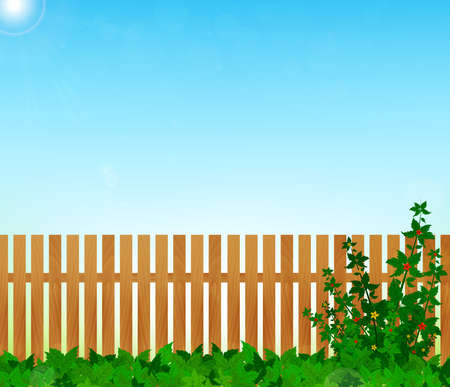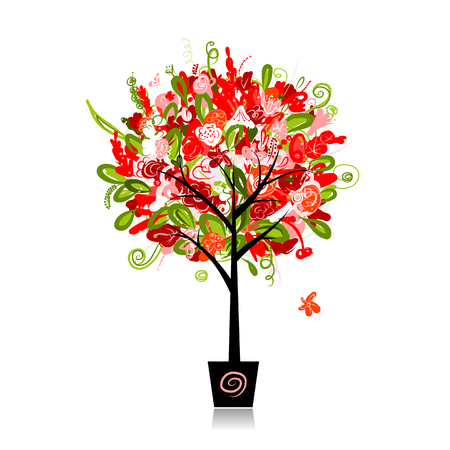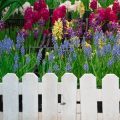Understanding Native Plants: What and Why
If you’re looking to create a garden that truly thrives in America’s diverse climates, it all starts with native plants. But what exactly are native plants? Simply put, native plants are species that have evolved naturally in a specific region over thousands of years. They’ve adapted to local soil, weather patterns, and wildlife, making them a crucial part of sustainable gardening. These plants aren’t just about looks—they play a significant role in supporting local pollinators like bees, butterflies, and hummingbirds, as well as birds and other wildlife that rely on them for food and shelter. By choosing native plants for your landscape, you’re doing more than beautifying your space; you’re helping maintain the natural balance of your region’s ecosystem. In today’s world where water conservation is more important than ever, native plants also stand out because they require less irrigation than non-native varieties. Their deep root systems help manage stormwater runoff and reduce the need for chemical fertilizers or pesticides. So when you plant natives, you’re not only saving time and resources—you’re investing in the health of your local environment and building a garden that will flourish naturally for years to come.
2. The Connection Between Native Plants and Water Conservation
When it comes to sustainable gardening in the U.S., native plants are true champions for water conservation and resource management. Unlike many non-native species, native plants have evolved over thousands of years to thrive in their local environments. This means they’re naturally adapted to regional rainfall patterns, soil types, and climate conditions. As a result, they generally require far less supplemental watering once established, making them an excellent choice for anyone looking to reduce their outdoor water use.
Why Native Plants Use Less Water
Native plants have deep root systems that help them access groundwater more efficiently and withstand periods of drought. These roots not only make the plants hardier but also help stabilize soil and prevent erosion. In contrast, non-native species often need more frequent irrigation because they aren’t as well-suited to local weather extremes or soil conditions.
Comparing Native vs. Non-Native Plants
| Feature | Native Plants | Non-Native Plants |
|---|---|---|
| Water Requirements | Low (after establishment) | High (regular irrigation needed) |
| Soil Health Impact | Improve soil structure; support beneficial microbes | Can deplete nutrients; may not support local soil life |
| Drought Tolerance | High (adapted to local conditions) | Low to moderate (may struggle in dry spells) |
| Pest & Disease Resistance | Strong (fewer chemicals needed) | Often susceptible (more maintenance required) |
Resource Conservation Beyond Water Savings
The benefits of using native plants go beyond just saving water. Their ability to improve soil health by adding organic matter and supporting diverse microbial life means you’ll spend less on fertilizers and soil amendments. Plus, because they attract pollinators like bees and butterflies, native gardens help maintain healthy ecosystems without extra intervention. Compared to non-native species that can become invasive or require heavy maintenance, natives are a win-win for gardeners looking for a resilient, low-input landscape that truly thrives with minimal resources.

3. Choosing the Right Native Plants for Your Region
Selecting native plants that truly thrive in your local climate is at the heart of a sustainable, water-wise garden. The United States covers a vast range of environments—from the sunbaked deserts of Arizona to the cool, rainy forests of the Pacific Northwest—so picking the right species makes all the difference.
Understand Your Growing Zone
Start by identifying your USDA Hardiness Zone. This map divides the country into areas based on average minimum winter temperatures. Knowing your zone helps you avoid planting species that can’t survive your winters or summers, saving time, money, and water.
Local Resources Are Gold Mines
Check with nearby cooperative extension offices, local native plant societies, or regional botanical gardens. These organizations have hands-on knowledge and often provide free plant lists tailored to your microclimate—whether you’re gardening in coastal California or rural Vermont.
Look for Water-Wise Winners
Focus on plants adapted to your region’s rainfall patterns. In the Southwest, consider drought-tolerant options like agave, penstemon, or desert marigold. In wetter climates like the Southeast or Pacific Northwest, try bee balm, cardinal flower, or ferns that handle rain without fuss.
Diversity Builds Resilience
A mix of grasses, wildflowers, shrubs, and trees creates a layered look while supporting pollinators and wildlife. Try to choose plants with staggered bloom times for year-round interest and habitat value—think spring-blooming phlox followed by summer coneflowers and fall asters in the Midwest.
By carefully matching your plant selections to your local conditions, you’ll lay the groundwork for a garden that conserves water and flourishes with less intervention—just as nature intended.
4. Designing Your Water-Wise Garden
Creating a water-wise garden that thrives with native plants requires thoughtful planning and practical strategies. The goal is to maximize beauty while minimizing water use and maintenance. Here’s a step-by-step guide to help you design a landscape that fits American climates and lifestyles.
Step 1: Assess Your Site
Start by observing sunlight patterns, soil type, and drainage in your yard. Identify shady, sunny, dry, and moist areas—this helps determine which native plants will perform best in each zone.
Step 2: Group Plants by Water Needs
One key principle of water-wise gardening is hydrozoning—grouping plants with similar water requirements together. This prevents overwatering and makes irrigation more efficient. Here’s a simple table to get you started:
| Zone | Plant Type | Water Needs | Suggested Natives (Example) |
|---|---|---|---|
| High | Near downspouts or low spots | Frequent watering (initially) | Swamp Milkweed, Cardinal Flower |
| Moderate | Main garden beds | Occasional deep watering | Black-eyed Susan, Coneflower |
| Low | Drought-prone edges/slopes | Minimal supplemental water once established | Purple Sage, Little Bluestem Grass |
Step 3: Arrange for Visual Appeal and Functionality
- Layer heights: Place taller species in the back or center (if island beds), medium in the middle, and groundcovers at the front for depth and structure.
- Massing: Plant in groups of three or more for naturalistic sweeps—this mimics how natives grow in the wild and is easier to maintain.
- Borders and paths: Use mulch or gravel paths between zones for access and weed suppression.
- Sustainability tip: Retain existing healthy trees or shrubs as anchor points; they provide shade, habitat, and reduce heat stress on new plantings.
Irrigation Planning Made Simple
If you use irrigation, install drip lines or soaker hoses only where needed—targeted watering saves time and money compared to overhead sprinklers. Consider rain barrels for harvesting runoff from your roof to irrigate thirsty zones naturally.
A Low-Maintenance Approach Pays Off
The right plant choices combined with smart layout mean less mowing, fewer chemicals, and much lower water bills. Native plants thrive on neglect once established, letting you enjoy a lush, eco-friendly yard with minimal intervention. Thoughtful design up front delivers years of beauty with hardly any fuss!
5. Soil Preparation and Smart Irrigation Techniques
Creating a thriving native plant garden starts with healthy soil and efficient water management. Unlike traditional landscaping, native plants often require less fertilizer and water, but good preparation is still key to long-term success. Begin by assessing your soil type—many American natives prefer well-drained soils, so you may need to amend heavy clay or compacted earth with organic matter like compost. Avoid using synthetic fertilizers; instead, let leaf litter and natural mulch build up over time to feed your soil organically.
Getting Beds Ready for Natives
Clear away weeds and invasive species before planting. Loosen the soil to encourage root growth, but don’t overwork it—many natives adapt best to slightly disturbed ground. Test your soil’s drainage by digging a hole and filling it with water; if it drains within a few hours, you’re good to go. For poor drainage, consider building raised beds or berms using local materials for a more natural look that fits seamlessly into the landscape.
Efficient Watering: Drip Systems and Mulch
Smart irrigation is essential for water conservation. Drip irrigation systems deliver water right at the roots where it’s needed most, reducing waste from evaporation or runoff—a must in regions prone to drought or watering restrictions. Pair drip lines with timers to ensure consistent moisture without overwatering. After planting, apply two to three inches of natural mulch such as shredded bark or wood chips. Mulch helps retain soil moisture, moderates temperature swings, and suppresses weeds—all while blending beautifully with your native landscape.
Low-Maintenance Success
Once established, most native plants require little supplemental watering beyond seasonal rainfall. Monitor your garden during dry spells and adjust irrigation accordingly, always aiming for deep, infrequent watering to encourage strong root systems. By investing in proper soil preparation and smart irrigation techniques upfront, you’ll enjoy a resilient garden that supports local wildlife and conserves precious water resources for years to come.
6. Maintaining a Resilient, Eco-Friendly Garden
Establishing Practical Maintenance Routines
Keeping your native plant garden healthy doesn’t have to be complicated, but it does require some regular attention. Start by getting to know your plants and their natural cycles—most native species are tough, but they’ll benefit from occasional weeding to keep invasives at bay. Mulching with organic material like shredded leaves or bark helps retain soil moisture and suppress weeds while adding nutrients over time. Set up a monthly walk-through of your garden to check for signs of stress, pests, or disease; catch issues early before they spread.
Seasonal Care Tips for Native Gardens
Every season brings new tasks. In spring, prune back last year’s dead growth and add fresh mulch where needed. Summer is about monitoring water needs—native gardens typically need less irrigation, but young plants may require extra help during droughts. Autumn is the time to let seed heads remain for birds and beneficial insects, while also removing any diseased debris. Winter care is minimal; most native plants go dormant, but you can tidy up fallen branches and enjoy the garden’s natural structure.
Supporting Pollinators and Biodiversity
A thriving native garden isn’t just beautiful—it’s a haven for wildlife. To support bees, butterflies, and other pollinators, choose a mix of flowering plants that bloom from early spring through late fall. Provide small water sources like shallow dishes filled with pebbles for safe drinking spots. Avoid using chemical pesticides or fertilizers; instead, let natural predators like ladybugs and birds help manage pests. Leave some leaf litter and stems standing through winter to offer shelter for overwintering insects and small animals.
Embracing an Eco-Friendly Mindset
The key to maintaining a resilient garden is working with nature instead of against it. Accept a little imperfection—chewed leaves or wild corners mean your garden is alive with activity. By focusing on practical routines, thoughtful seasonal care, and fostering local biodiversity, you’ll create an outdoor space that not only conserves water but also gives back to your local ecosystem year after year.


